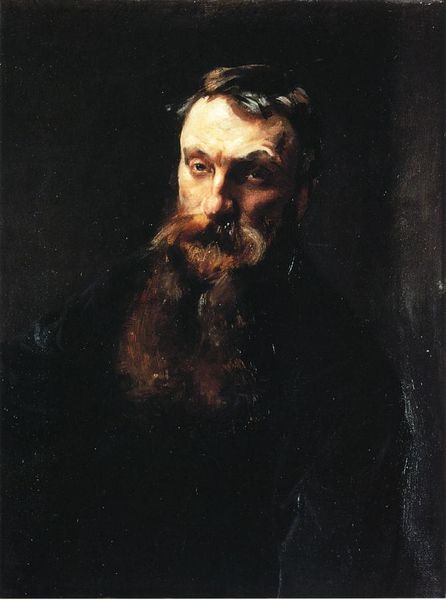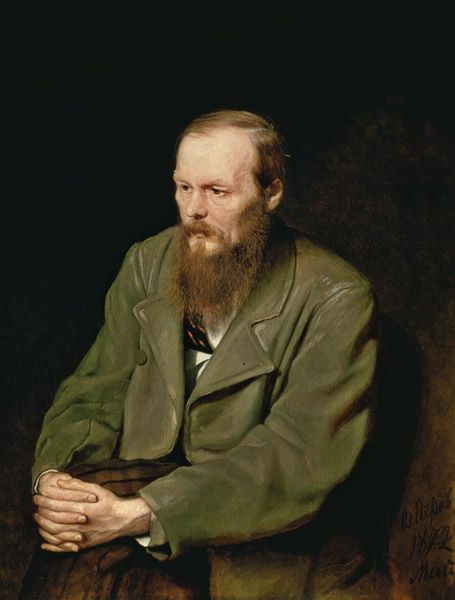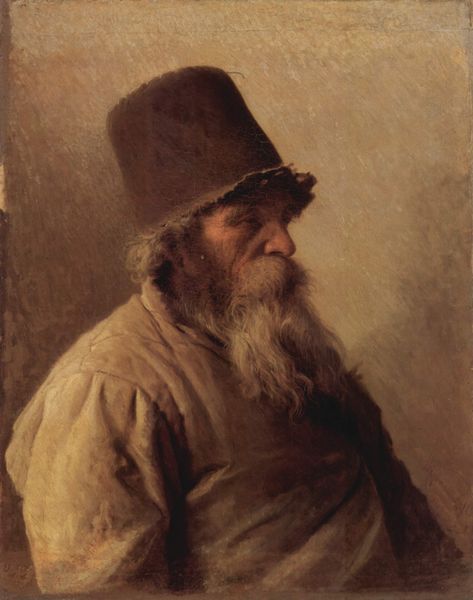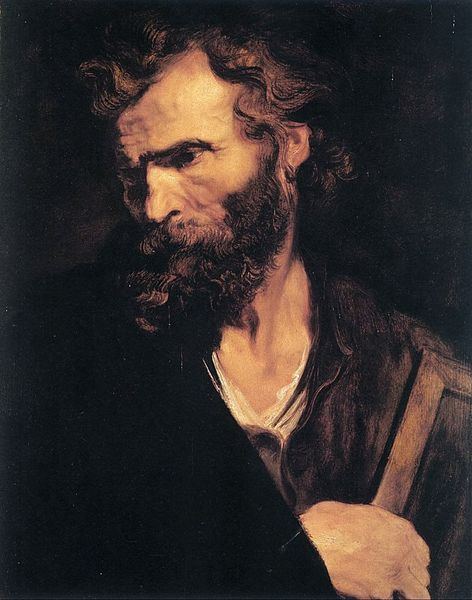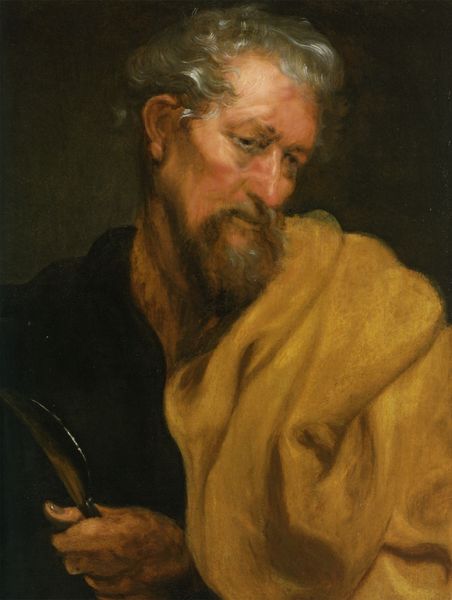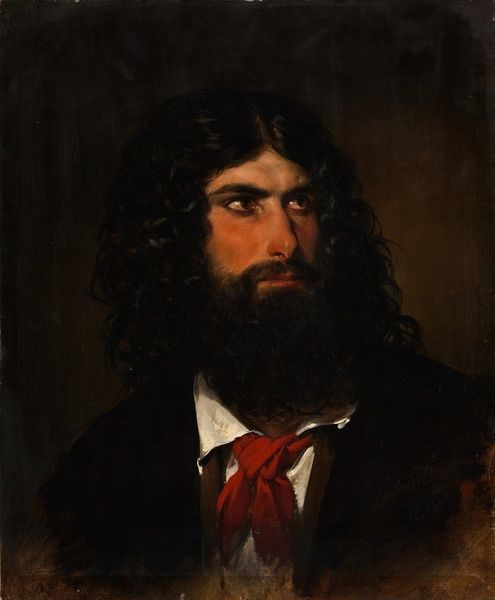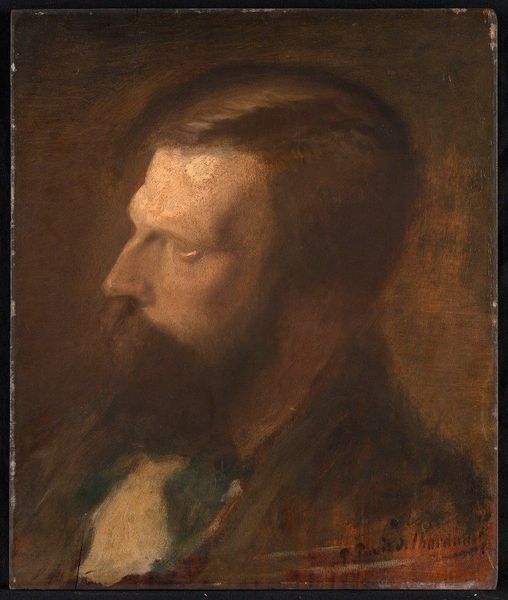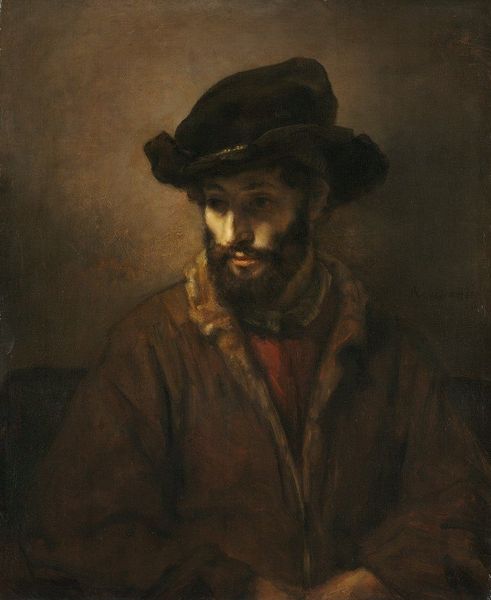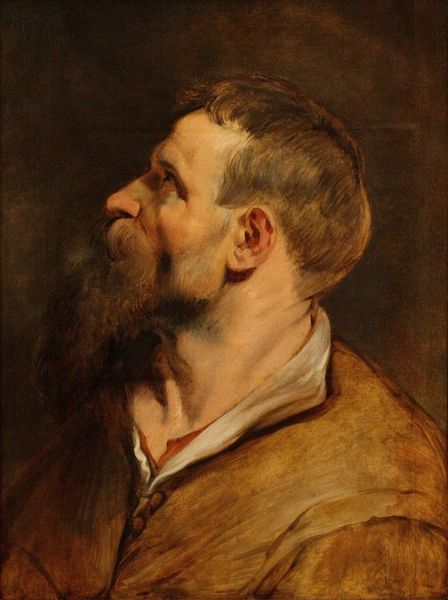
Dimensions: 98 x 79.5 cm
Copyright: Public domain
Editor: Here we have Ivan Kramskoy’s oil on canvas, "Portrait of Leo Tolstoy," created in 1873. The sheer intensity in Tolstoy’s gaze is striking. How do you interpret this work? Curator: It’s interesting to consider this portrait as an intersection of art and social critique. Kramskoy, aligned with the Peredvizhniki movement, sought to depict real life and critique social inequalities. How might Tolstoy, known for his progressive ideals and social critique, be both complicit in, and critical of, the systems of power around him? Editor: So you’re suggesting we should consider not only Tolstoy’s own beliefs but his position of privilege? Curator: Precisely. His clothing, while seemingly simple, still suggests a certain status, doesn’t it? This isn't just about representing Tolstoy, the individual, but about using his image to explore broader questions about class and intellectual responsibility. How does Tolstoy's somewhat dishevelled appearance play into or challenge expectations of aristocracy? Editor: That's a really insightful way of looking at it. It's almost like the painting is posing questions about authenticity and representation. Curator: Exactly. Think about how Kramskoy positions him. Not idealized, but very present. And those eyes...they seem to demand that we also confront ourselves and our own roles in societal structures. Editor: I hadn’t considered the challenge it presents to the viewer, it’s made me rethink how portraits can function as a challenge and prompt change. Curator: Right? Seeing art as action, rather than just passive representation, changes everything.
Comments
No comments
Be the first to comment and join the conversation on the ultimate creative platform.


